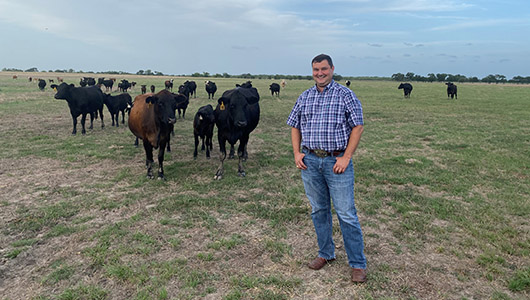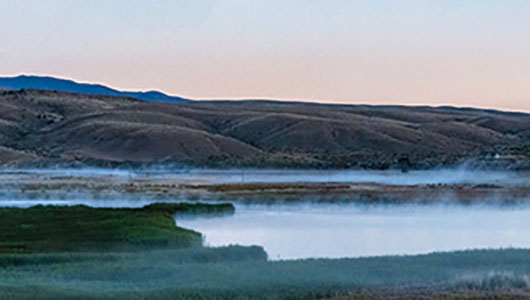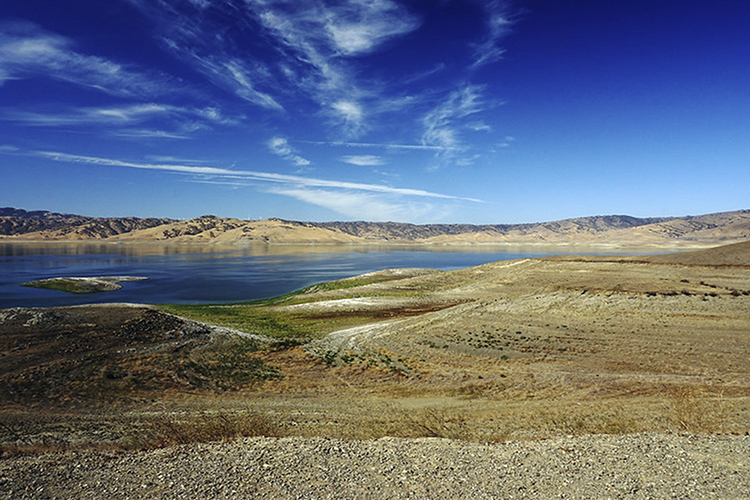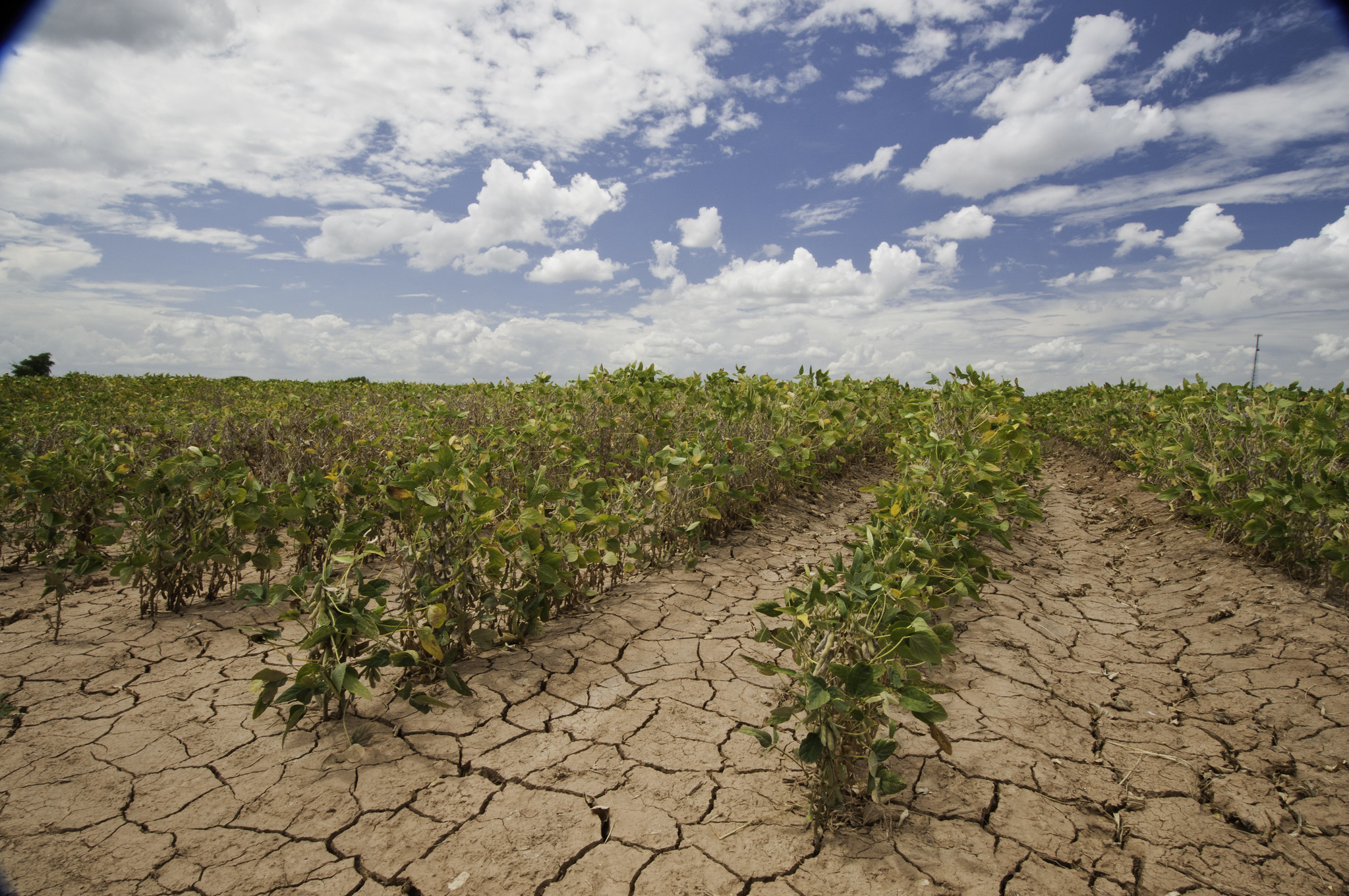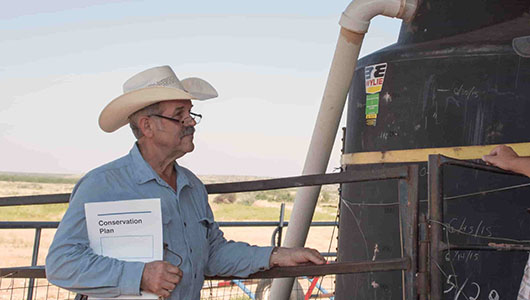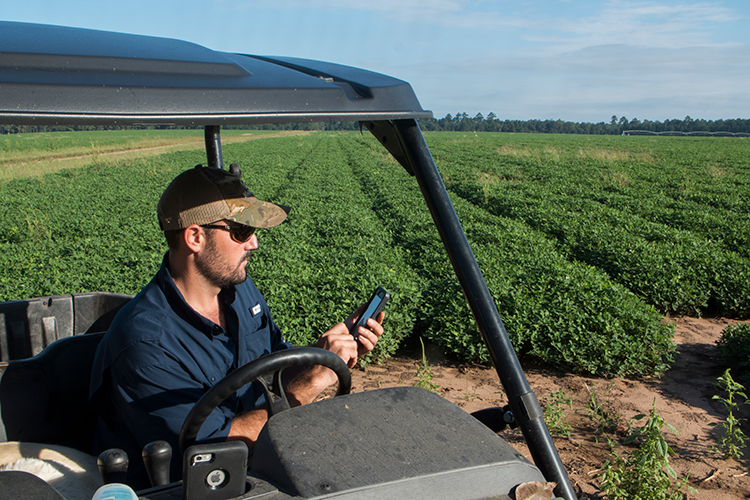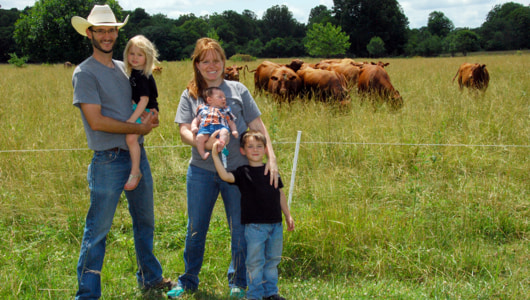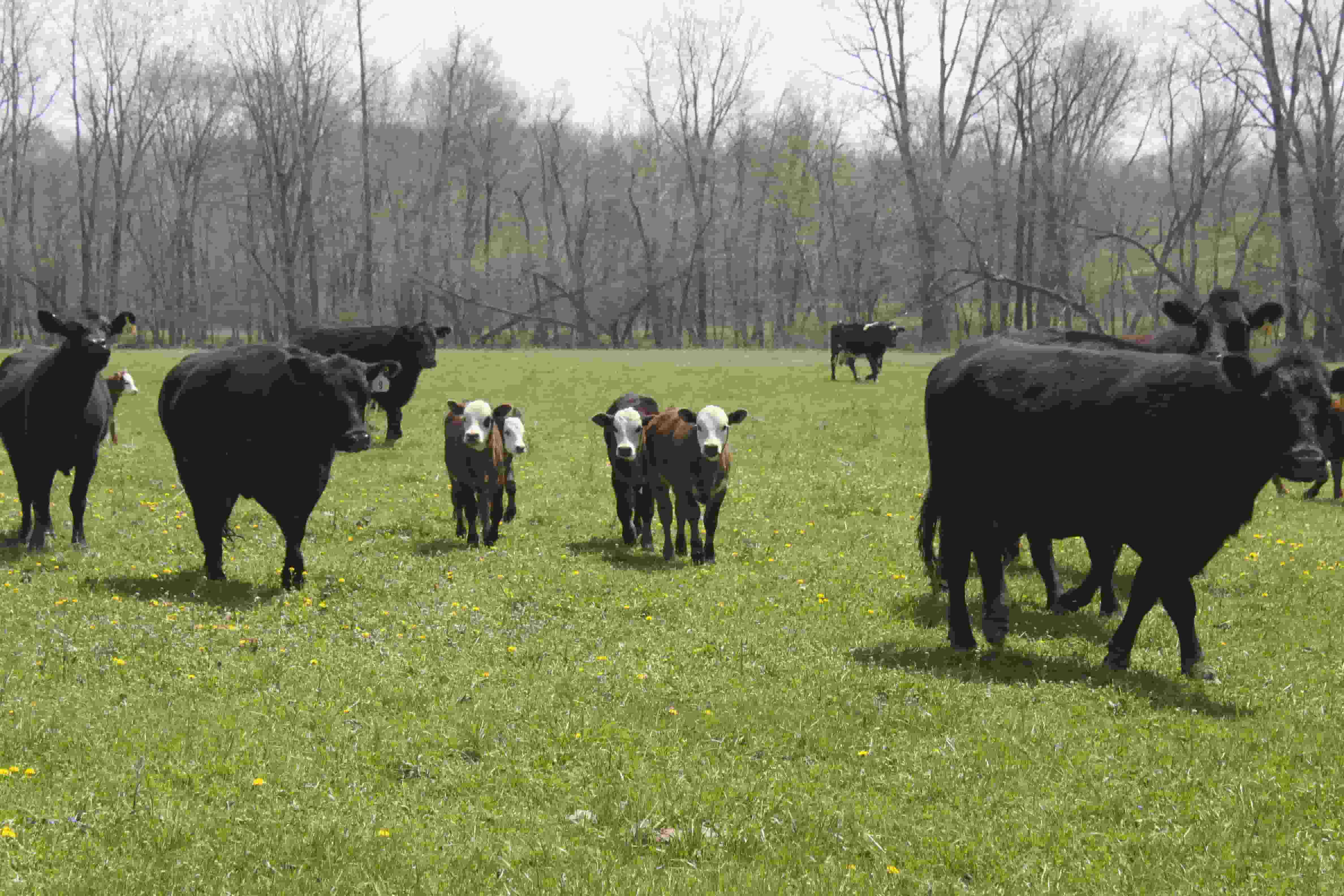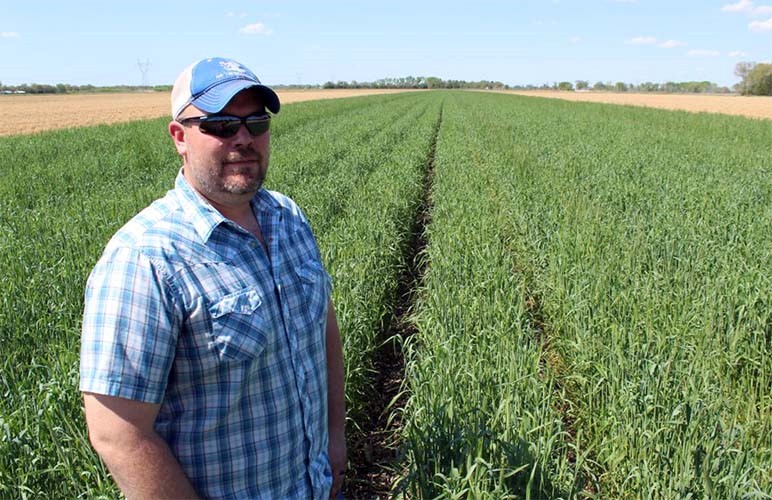Agriculture is one of the largest users of surface water and groundwater, with irrigation being the greatest use. There are many ways farmers and ranchers can manage excess water, conserve limited supplies of water, and build resilience to mitigate drought on their land and in their community.
Control Drainage
Good drainage water management ensures you can keep appropriate amounts of water on your fields, helping you cope with too much or too little water in the system. Proper drainage can improve water quality, plant productivity, and soil health.
Drainage control practices include:
- Water and Sediment Control Basins
- Subsurface Drains (Tile Drainage)
- Structures for Water Control
Improve Irrigation Infrastructure
Using the correct irrigation equipment and structures can ensure that water efficiently goes where it is needed. Good irrigation can reduce water usage, saving money and water.
Practices that improve irrigation infrastructure include:
- Microirrigation
- Pumping Plants
- Irrigation Pipelines
Improve Water Supply
A reliable supply of water is essential to grow crops and raise livestock efficiently. Improving water supply helps ensure you are getting the most benefit from precipitation and groundwater while leaving enough for future needs and others in the community.
Practices that help collect and store water include:
- Ponds
- Dams
- Roof Runoff Structures
Improve Moisture Management
Practices that improve water and soil moisture management help to ensure more clean water is available for the farm and the community, by ensuring the soil holds moisture and filters water leaving the farm.
Practices that can improve moisture management include:
- No Till
- Cover Crops
- Prescribed grazing
Focus on Water Quantity
Western Water and Working Lands Framework
NRCS helps producers conserve water and build drought resilience in 17 western states through the Western Water and Working Lands Framework for Conservation Action. In this framework, NRCS identifies six conservation challenges, the need for conservation on vulnerable agricultural landscapes, and 13 strategies to help NRCS state leaders, water resource managers, and producers respond to these challenges.
WaterSMART Initiative
Managing water resources in the American West can be challenging. Drought, aging infrastructure, and environmental requirements can strain existing resources. Through NRCS’s WaterSMART Initiative (WSI), we collaborate with the Bureau of Reclamation (BOR) to coordinate investments in priority areas for improving our cumulative impact in water conservation and drought resilience.
DamWatch
DamWatch is an app developed with USEngineering Solutions Corporation that allows NRCS's partners to monitor dam conditions, ensuring that they are safe and properly maintained.
Arkansas Groundwater Initiative
The Arkansas Groundwater Initiative (AGWI) is a targeted approach to address the critical groundwater decline issues in the Arkansas Delta. Through this voluntary program, financial and technical assistance is provided to agricultural producers in seven counties in Arkansas.
Ogallala Aquifer Initiative (former)
The Ogallala Aquifer supports nearly one-fifth of the wheat, corn, cotton and cattle produced in the United States. It has long been the main water supply for the High Plains’ population and is being used at an unsustainable rate. Through the Ogallala Aquifer Initiative (OAI), conservation activities were targeted in focus areas where NRCS and partners identified projects that conserve water and strengthen agricultural operations. NRCS provides agricultural producers with technical and financial assistance to implement a variety of conservation practices, including improving irrigation efficiency, managing nutrients, implementing prescribed grazing and other conservation systems.
Water Quantity Practices for Working Lands
Irrigation Water Management
Irrigation water management is paired with irrigation systems to ensure efficiency.
 2 minute video
2 minute video
Pumping Plant
A pumping station delivers water at a specific rate and pressure. Daniel Keudell of Aumsville, OR, worked with NRCS to update his irrigation system and install variable frequency drives.
 2 minute video
2 minute video
Microirrigation
Microirrigation is a way to deliver small amounts of water to specific areas. Raghbir Atwal in Yuba City, CA, is using this practice to reduce water use and improve tree health on his orchard.
 2 minute video
2 minute video
Find Your Local Service Center
USDA Service Centers are locations where you can connect with Farm Service Agency, Natural Resources Conservation Service, or Rural Development employees for your business needs. Enter your state and county below to find your local service center and agency offices. If this locator does not work in your browser, please visit offices.usda.gov.
Learn more about our Urban Service Centers.
Visit the Risk Management Agency website to find a regional or compliance office or to find an insurance agent near you.

